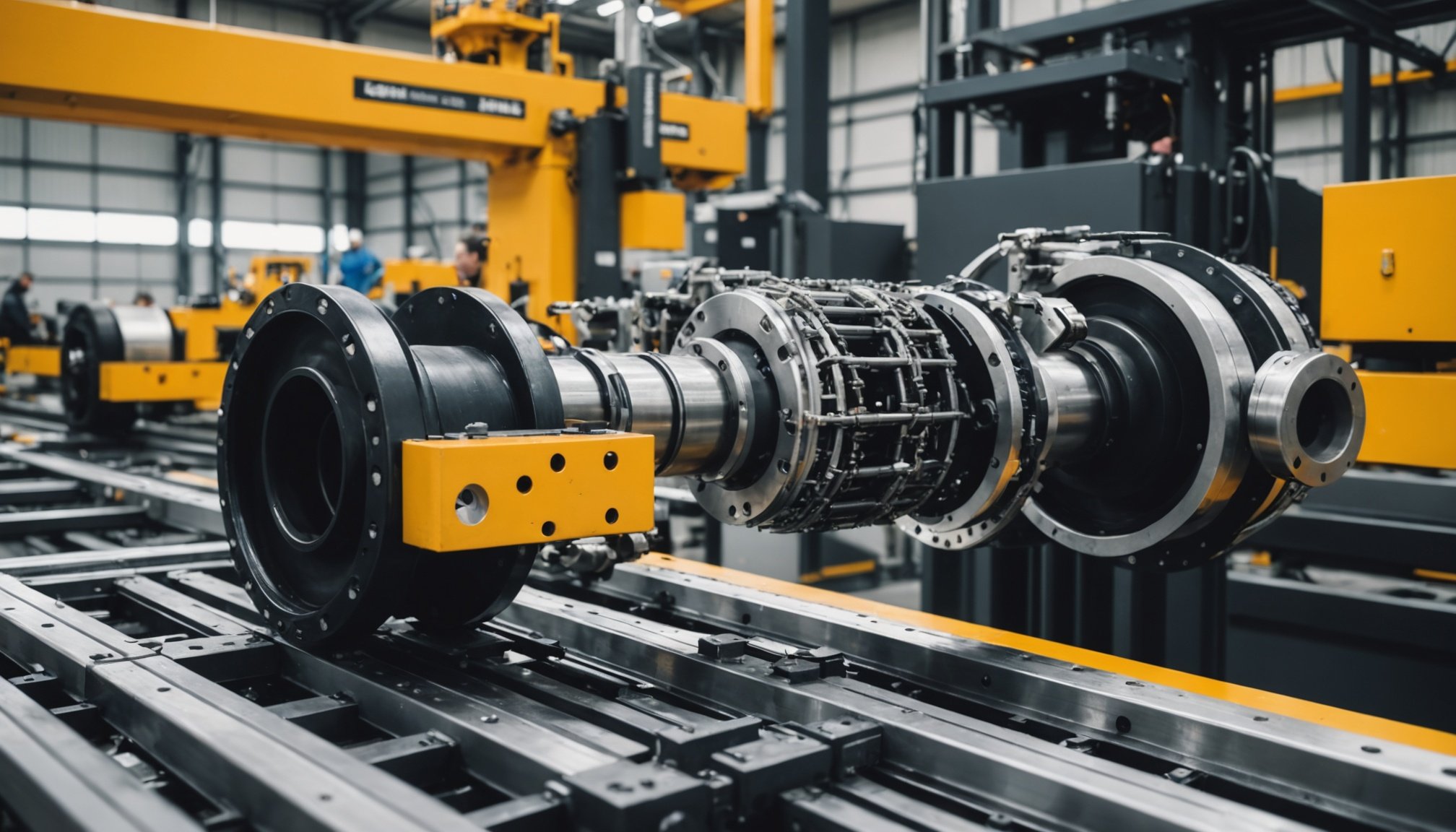Unlocking Supply Chain Success: Harnessing Machine Learning for Enhanced Forecasting in UK Manufacturing
In the fast-paced and increasingly complex world of manufacturing, the ability to predict and adapt to changing demand is crucial for maintaining a competitive edge. This is where machine learning steps in, revolutionizing supply chain management by enhancing forecasting, optimizing operations, and driving efficiency. Here’s a deep dive into how machine learning is transforming the UK manufacturing sector.
The Power of Machine Learning in Supply Chains
Machine learning, a subset of artificial intelligence (AI), is being increasingly adopted in supply chain management to analyze vast amounts of data, identify patterns, and make accurate predictions. This technology is not just a tool; it’s a game-changer.
Also read : Unlocking the Future: How Smart Contracts Will Transform Real Estate Transactions in the UK
Demand Forecasting
One of the most significant applications of machine learning in supply chains is demand forecasting. By analyzing historical data, seasonal trends, and external factors such as weather and economic conditions, machine learning algorithms can predict demand with a high degree of accuracy. For instance, Domino’s Pizza UK & Ireland shifted from traditional spreadsheets to AI and analytics for demand prediction using Dynamics 365, resulting in improved forecasting quality and enhanced customer experience[2].
Predictive Analytics
Predictive analytics is another key area where machine learning excels. It helps businesses anticipate risks and disruptions by analyzing historical data and external factors. According to a survey by KPMG, 77% of respondents agreed that the use of generative AI in logistics is highly impactful, enabling early adopters to improve logistics costs by 15%, inventory levels by 35%, and service levels by 65%[2].
Topic to read : Get noticed online with a trusted seo agency in new york
Enhancing Efficiency Through Automation and Optimization
Machine learning is not just about forecasting; it also plays a critical role in optimizing various aspects of supply chain operations.
Inventory Management
Automating inventory management is a significant benefit of machine learning. By analyzing real-time data, AI systems can optimize inventory levels, reduce stockouts, and minimize overstocking. For example, generative AI can simulate various inventory scenarios to determine the optimal inventory levels, ensuring that the right products are available at the right time[2].
Logistics Optimization
Logistics optimization is another area where machine learning shines. By analyzing real-time data, AI can optimize delivery routes, reducing transportation times and costs. This is achieved through the integration of IoT technology and machine learning algorithms that continuously monitor and adjust routes for maximum efficiency[3].
Real-Time Visibility and Decision Making
Real-time visibility is a cornerstone of modern supply chain management, and machine learning is at the forefront of this revolution.
Supply Chain 4.0
The concept of Supply Chain 4.0, driven by Industry 4.0 technologies, emphasizes real-time visibility and advanced analytics. This approach enables companies to have end-to-end visibility, allowing for better planning and decision making. According to McKinsey & Company’s Supply Chain Pulse Survey, 79% of respondents have achieved end-to-end visibility, and many are now focusing on overhauling outdated planning processes[3].
Data-Driven Decision Making
Machine learning enables data-driven decision making by providing insights into past performance, predicting future trends, and suggesting actionable takeaways. This is achieved through various types of analytics:
- Descriptive Analytics: Provides insights into past performance.
- Predictive Analytics: Predicts future trends or outcomes.
- Prescriptive Analytics: Suggests actionable takeaways.
- Cognitive Analytics: Simulates human thought processes in analyzing complex datasets[4].
Case Studies: Real-World Applications
Several companies are already reaping the benefits of machine learning in their supply chains.
Domino’s Pizza UK & Ireland
Domino’s shifted from traditional spreadsheets to AI and analytics for demand prediction, resulting in improved forecasting quality and enhanced customer experience. This move ensured that the right products were available at the right time, reducing the risk of stockouts[2].
Jubilant Bhartia Group
Jubilant Ingrevia has widely deployed digital twins and AI across all production stages to boost efficiency, reduce process variations, and optimize yield and throughput. They have reduced process variability by 63% and downtime by more than 50% through predictive maintenance[5].
Siemens AG
At Siemens, AI applications have transformed manufacturing by optimizing testing procedures, increasing first-pass yield, and boosting efficiency. AI-enabled robots have reduced automation costs by 90%, and manual workers are empowered with AI-guided systems, enhancing productivity and quality[5].
Overcoming Challenges and Ensuring Continuous Improvement
While machine learning offers numerous benefits, there are challenges to navigate.
Data Quality and Integration
Ensuring data quality and integration is crucial for the efficacy of AI and analytics solutions. Poor data quality can lead to misleading outcomes and incomplete analyses. Companies must ensure that the data collected is accurate, consistent, and comprehensive across various sources[4].
Continuous Improvement
Continuous improvement is key to maximizing the benefits of machine learning in supply chains. This involves regularly updating algorithms, integrating new data sources, and refining predictive models. Here are some practical steps for continuous improvement:
- Regularly Update Algorithms: Ensure that machine learning models are updated with new data to maintain their accuracy.
- Integrate New Data Sources: Incorporate new data sources such as IoT sensors, social media, and weather data to enhance predictive capabilities.
- Refine Predictive Models: Continuously refine predictive models based on feedback and new insights.
- Train and Retrain: Train and retrain AI models to adapt to changing market conditions and business needs.
Practical Insights and Actionable Advice
For manufacturers looking to harness the power of machine learning, here are some practical insights and actionable advice:
Start Small
Begin with a pilot project to test the waters. Implement machine learning in a specific area of your supply chain, such as demand forecasting or inventory management, and measure the results before scaling up.
Invest in Data Infrastructure
Ensure that your data infrastructure is robust and capable of handling the volume and complexity of data required for machine learning. This includes investing in data storage, processing power, and analytics tools.
Collaborate with Experts
Partner with AI experts and consultants to help you navigate the complexities of machine learning. They can provide valuable insights and help you implement the right solutions for your business.
Focus on Visibility
Enhance visibility across your supply chain by integrating real-time data from various sources. This will help you make better decisions and respond quickly to changes in demand or supply.
Machine learning is revolutionizing supply chain management in the UK manufacturing sector by enhancing forecasting, optimizing operations, and driving efficiency. With its ability to analyze vast amounts of data, predict future trends, and automate routine tasks, machine learning is a powerful tool that no manufacturer can afford to ignore.
As Tom Cash, director of automation parts supplier Foxmere, notes, “Supply Chain 4.0 technologies will help manufacturers prevent unplanned downtime and enhance overall efficiency”[3]. By embracing machine learning and other Industry 4.0 technologies, manufacturers can achieve significant improvements in their supply chains, leading to better decision making, reduced costs, and improved customer satisfaction.
Table: Benefits of Machine Learning in Supply Chain Management
| Benefit | Description | Example |
|---|---|---|
| Enhanced Demand Forecasting | Accurate prediction of demand based on historical data and external factors. | Domino’s Pizza UK & Ireland improved forecasting quality using AI and analytics[2]. |
| Predictive Maintenance | Predicting equipment failures to prevent unplanned downtime. | Jubilant Bhartia Group reduced downtime by more than 50% through predictive maintenance[5]. |
| Inventory Optimization | Optimizing inventory levels to reduce stockouts and overstocking. | Generative AI simulates various inventory scenarios to determine optimal inventory levels[2]. |
| Logistics Optimization | Optimizing delivery routes to reduce transportation times and costs. | Integration of IoT technology and machine learning algorithms to optimize routes[3]. |
| Real-Time Visibility | Providing end-to-end visibility across the supply chain. | McKinsey & Company’s Supply Chain Pulse Survey highlights the importance of real-time visibility[3]. |
| Data-Driven Decision Making | Making decisions based on insights from descriptive, predictive, prescriptive, and cognitive analytics. | Various types of analytics help businesses make informed decisions[4]. |
Detailed Bullet Point List: Key Applications of Machine Learning in Supply Chains
-
Demand Forecasting:
-
Analyze historical data and external factors to predict demand.
-
Use machine learning algorithms to identify patterns and trends.
-
Integrate with other systems to ensure real-time updates.
-
Predictive Maintenance:
-
Use IoT sensors and machine learning to predict equipment failures.
-
Perform maintenance before breakdowns occur to prevent unplanned downtime.
-
Analyze data from various sources to identify risk patterns.
-
Inventory Management:
-
Optimize inventory levels based on real-time data.
-
Simulate various inventory scenarios to determine the optimal levels.
-
Automate inventory management to reduce human error.
-
Logistics Optimization:
-
Analyze real-time data to optimize delivery routes.
-
Use machine learning algorithms to adjust routes for maximum efficiency.
-
Integrate with IoT technology to monitor and adjust routes continuously.
-
Real-Time Visibility:
-
Provide end-to-end visibility across the supply chain.
-
Use advanced analytics to analyze real-time data.
-
Ensure that all stakeholders have access to the same data for better decision making.
-
Data-Driven Decision Making:
-
Use descriptive analytics to understand past performance.
-
Use predictive analytics to predict future trends.
-
Use prescriptive analytics to suggest actionable takeaways.
-
Use cognitive analytics to simulate human thought processes in analyzing complex datasets.











